Buffalo Technology TeraStation Pro II 1.0TB Review
Buffalo Technology TeraStation Pro II 1.0TB
Buffalo's Terastation Pro now has a sequel. But does it improve on the original?
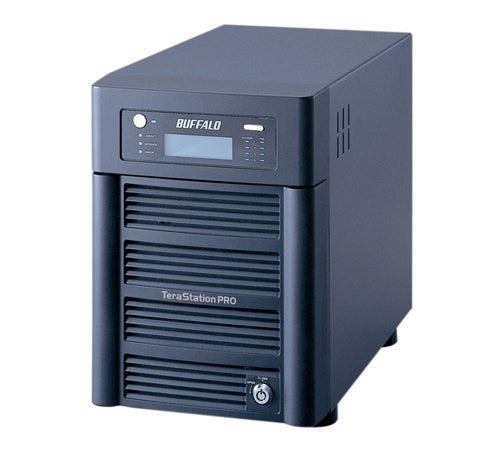
Verdict
Key Specifications
- Review Price: £497.32
Buffalo Technology has traditionally been a big player in the entry-level NAS appliance market thanks to its TeraStation products. The TeraStation Pro impressed with its excellent range of features and tempting price tag and now we take a look at the TeraStation Pro II, which aims to improve on the performance of its predecessor.
There’s nothing new to see externally as the Pro II uses the same chassis as the Pro model and you also get the same backlit LCD display above the drives. A button alongside enables you to cycle through viewing the status of the network connection and its assigned IP address, the date and time, which disks are in use and the RAID configurations. The network connection is still served by a single Gigabit Ethernet port and the USB port count remains at two. These are used to connect external storage devices but note that USB printers are still not supported.

The door can be locked shut and behind this are four drive bays with the review system equipped with a quartet of 250GB SATA hard disks in removable carriers. Unlike much of the competition, including the Infrant Technologies ReadyNAS NV and Thecus’ RouStor N5200 the TeraStations have never supported hot-swap capabilities and so it is with the Pro II. Instead, Buffalo uses a quick swap feature where the drive carriers have a combined SATA/power connector cable which must be unplugged manually from the rear of the drive. Buffalo advised us that if a drives fails the unit must be powered down before it can be replaced. Buffalo offers a next day replacement service and the new drive arrives complete with carrier. It’s not as elegant as true hot-swap but the process of replacement won’t take too long as it’s completely tool-free and once the new drive is in place the appliance will automatically rebuild the array.
The Pro II 1TB on review only costs around £20-£30 more than the previous model but processing power gets a big boost as the 266MHz PowerPC processor has been replaced with a 500MHz Marvell Orion variety. Marvell also takes over SATA and USB controller duties although main memory remains the same at a modest 128MB. The Linux kernel is also still partly implemented on 4MB of flash memory and this arrangement stops you buying the appliance diskless as the kernel is distributed across a protected 100MB partition on each hard disk. The faster processor has enabled Buffalo to improve performance with it claiming a top speed of 35MB/sec for FTP transfers.
Buffalo’s NAS Navigator takes the pain out of installation as it locates the appliance and helps with initial setup. Another new feature pops up at this stage as Buffalo has improved its RAID outlook as you now have options to configure the drives as RAID-0, -1 -10, -5 or JBOD arrays. Array creation is a lengthy process as we found a four disk RAID-5 array took seven and a half hours to build.
The improved hardware specification certainly showed its mettle in our performance tests where we pitted a standard Pro model against the Pro II. Running the Iometer utility on a SuperMicro 3.2GHz Pentium D workstation returned a raw read throughput of 15MB/sec for the Pro and 34MB/sec for the Pro II. Real world speeds also saw major improvements as copying a 690MB video file to the appliances and back again saw the Pro deliver read and write speeds of 11MB/sec and 4.2MB/sec, which the Pro II improved these to 18.2MB/sec and 13.8MB/sec respectively. FTP throughput also improved hugely and to test this we used the Windows FTP command line utility. Get and Put commands saw the Pro give read and write speeds of 11MB/sec and 7.2MB/sec whilst the Pro II returned 26.6MB/sec and 16MB/sec for the same tests.
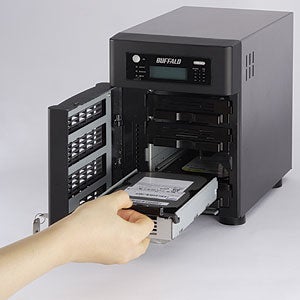
Backup features are extensive as data can be copied across multiple TeraStations on the network using a scheduler, which manages up to up to eight differential or full backup tasks. Basic workstation backup is handled by the bundled Easy Backup utility, which enables users to create scheduled jobs for securing their own local data to the appliance. We’ve always found this tool a tad basic but you also get a single user copy of Memeo’s AutoBackup software. This is a lot more sophisticated as it supports a greater number of backup destinations, offers optional backup encryption and after the first full backup has run will only secure file changes or new files using an agent that runs permanently in the background.
Other features remain the same with the appliance supporting Windows, Linux and Macintosh clients whilst security extends to a local user database along with NT authentication and Active Directory support. Shares are easy enough to create and you can allow global access for specific users and groups and decide whether each can have read only rights or full access.
”’Verdict”’
The TeraStation Pro II doesn’t offer a huge improvement over its predecessor but the faster processor certainly makes it presence felt in the performance stakes, RAID options have been increased and backup facilities look even better.
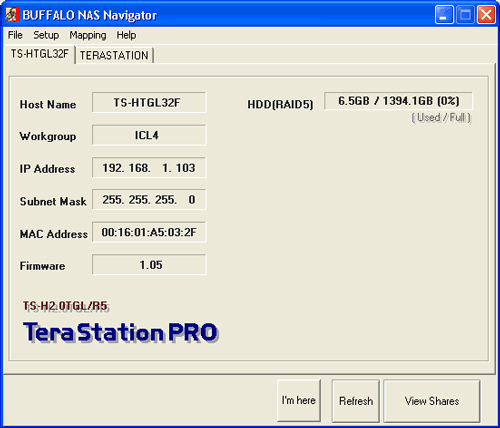
Buffalo’s NAS Navigator streamlines installation with it finding both our TeraStations on the network.
—-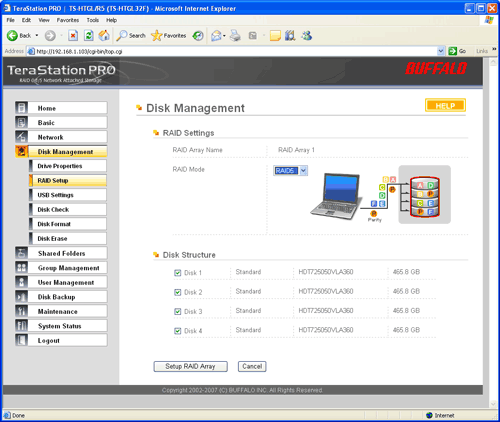
RAID options increase and the tidy web interface provides plenty of help in creating them.
—-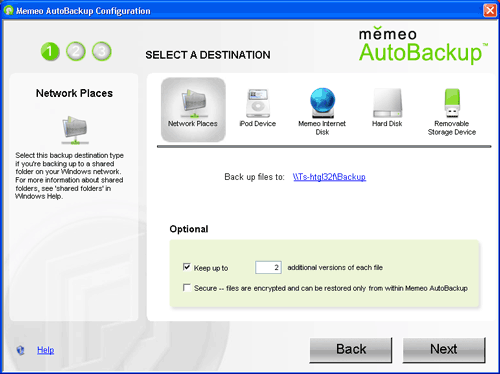
It’s only a single user license but the bundled AutoBackup offers a range of useful tools.
—-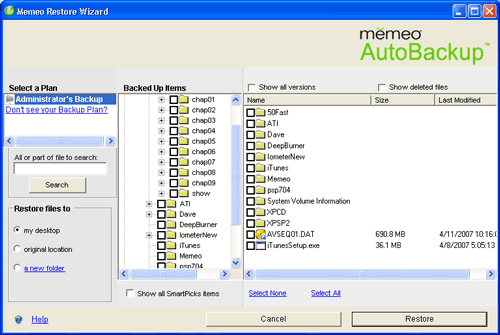
Memeo’s data recovery tool also makes light work of retrieving files and folders from the appliance.
—-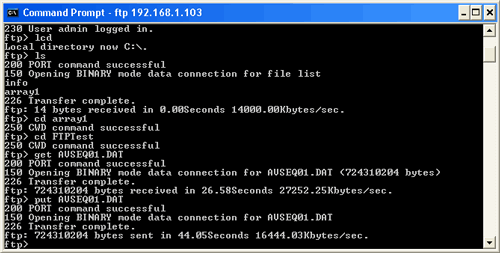
The Windows FTP utility shows how much faster the Pro II is over its predecessor.
—-
Trusted Score
Score in detail
-
Value 8
-
Features 8

